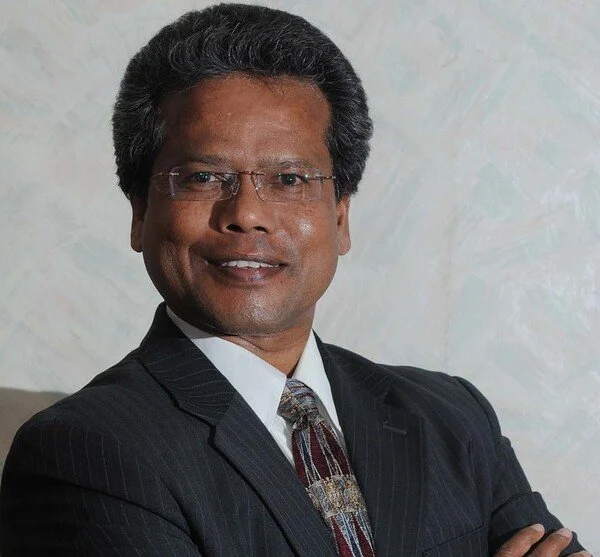Val Watts doggedly hunts an undruggable enzyme as target for chronic pain treatment
Val Watts enjoys a tricky puzzle. The associate dean for research and professor of medicinal chemistry and molecular pharmacology built his career attempting to find solutions to problems others have deemed unsolvable. His latest white whale is a doozy.
Val Watts, associate dean for research and professor of medicinal chemistry and molecular pharmacology at Purdue University. Photo by Charles Jischke
Watts wants to develop pain medications as strong and effective as opioids, without their addictive properties. To do so, he’s collaborating with other College of Pharmacy researchers to target the adenylyl cyclase enzyme, a signal pathway shared by opioid receptors and dopamine receptors.
“Other scientists describe adenylyl cyclase and that family of enzymes as undruggable,” Watts says. “These are among the most challenging proteins to scientifically interrogate. Industry has shied away from this target. If I don’t go after it, I don’t know who will.”
The research requires an interdisciplinary approach involving multiple collaborators. Daniel Flaherty, the Chip and Jane Rutledge Early Career Professor and associate professor of medicinal chemistry and molecular pharmacology, synthesizes small molecules that target adenylyl cyclase. Those molecules are then tested in the Watts lab. Additionally, Watts works with Ryan Altman, the Steve and Lee Ann Taglienti Chair in Pharmacy and professor of medicinal chemistry and molecular pharmacology, who also synthesizes drugs to treat chronic pain.
Jianing Li, associate professor of medicinal chemistry and molecular pharmacology, is another collaborator who specializes in computer-aided drug design and uses artificial intelligence and machine learning to develop new small molecules to treat migraines, another form of chronic pain. All of this collaborative research feeds into a team of behavioral pharmacologists at the University of Buffalo investigating how those small molecules affect chronic pain levels in mice.
“The image of a lone scientist toiling away in the lab until they have a eureka moment is a myth,” Watts says. “In the drug discovery process, we do everything in teams. It’s a marathon, not a sprint. My hope is that the work I do will one day lead to a major pharmaceutical company investing resources in medications that target adenylyl cyclase to treat chronic pain.”
And if that happens, the 20% of U.S. adults living with chronic pain will have a treatment option that doesn’t come with the looming threat of addiction. The Centers for Disease Control estimate that 45 people die each day from a prescription opioid overdose.
“Opioids are miracle drugs in terms of the treatment of severe pain,” Watts says. “When they first entered the market, they were game changers that provided relief to people who were previously debilitated due to chronic pain. It allowed people to regain their lifestyle and return to work. But the marketing didn’t warn prescribers that patients could develop dependence with chronic opioid use. Now we’re dealing with an opioid epidemic.”
Developing drugs capable of treating chronic pain with the efficacy of opioids would be another game changer. Whether it’s a medication that could replace opioids altogether or be taken in combination so patients use less prescription opioids, Watts says pharmaceutical companies have shown interest in finding an alternative. The team’s preliminary data shows a possibility that such drugs could be used to transition patients off opioids, too.
Watts has empathy for such patients, who rely on prescription opioids to manage chronic pain. He took opioids himself for chronic back pain before having surgery 15 years ago. His personal experience staving off opioid dependency is part of what motivates him to find a better alternative for treatment. That, and the scientific curiosity that’s always driven him to confront the unknown.
“Scientists create new knowledge where there are gaps,” Watts says. “That’s what excites me about research. Knowing I’ve had a hand in something that ultimately benefits humans gives me great pleasure. It challenges me and inspires me on a daily basis to continue this work.”
To further embody his commitment to cracking the case, Watts got a tattoo of the adenylyl cyclase enzyme on his arm in December.
“Most of us are very dedicated to what we do,” he says. “This is our life’s passion.”
This story appeared in the 2024 issue of The Purdue Pharmacist magazine.












